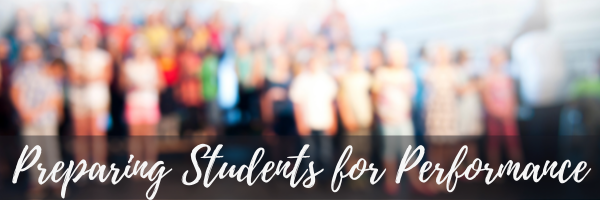 By Jill HareMusic teachers across North Carolina are engaged in another year of pandemic teaching. In many schools across the state, masks continue to be a necessary part of making music safely indoors. Some elementary and choral teachers take classes outdoors to sing distanced and freely unmasked. Band teachers have found ways for their students to play wind and brass instruments either outside or safely with special masks and covers to catch the aerosols. Regardless of the type of music class, COVID-19 restrictions have impacted the methods and sequence of music programs and public performances. Masks and social distancing have many health advantages but create challenges for ensemble music-making. Music teachers found creative ways to share their students’ school music experiences during the height of the pandemic. They watched tutorials on video and music editing and then spent hours mixing concert videos to share with families in lieu of live performance. Initially, we applauded these big efforts and impressive videos. However, the novelty of Zoom and other online platforms for sharing music has fatigued students, parents, and teachers alike. While technology was a great tool for connecting school music programs with community members, the student experience is hardly comparable. Recording music for a performance does not yield the same experience of performing live with peers for an audience. As many yearn for concerts to return to the school calendar, we shouldn’t miss the potential performance anxiety that the pandemic pause in concerts might have on students of all ages. About Performance Anxiety When students perform, the ensemble environment shifts from the safety and familiarity of a classroom. Many external factors of live performance shape the experience for students. Dianna Kenny has written extensively on Music Performance Anxiety (MPA) and has defined it as “the experience of marked and persistent anxious apprehension related to musical performance that has arisen through underlying biological and/or psychological vulnerabilities and/or specific anxiety conditioning experiences. It is manifested through combinations of affective, cognitive, somatic and behavioral symptoms” (Kenny, 2005). Building on the MPA work of Kenny, Charlene Ryan explored how young children experience MPA. “Children are generally expected to perform in a choral capacity in school musical events from the outset of elementary school, often during the preschool years. These performances are typically viewed as positive experiences for children—opportunities to show parents and teachers what they have learned and to express themselves publicly through music. However, the question remains as to whether these performances might cause undue anxiety for some children'' (Ryan, 2005). These studies were done well before COVID-19 and psychologists suggest that “the pandemic may also exacerbate specific types of anxiety” (Courtney, 2020). Research will need to be conducted to see how and if performance anxiety shows up in student behavior in a significant way after such a long hiatus from regularly scheduled concerts. Ryan’s research implications are that teachers should understand MPA and consider how to prepare students by implementing strategies that counteract negative feelings toward performance. How to Help Students We can learn a great deal from research about music performance anxiety to help students smoothly return to the stage. Students need to be well equipped before any concert, however, concert preparation may be even more important now. First, acknowledge the length of time since a student's last performance. Let students know to expect an increase in excitement and anticipation before or during a concert. Students should be aware that their bodies will have a physical reaction before and/or during a performance and most physical responses are totally normal and expected. Try to describe the “tummy butterflies” or accelerated heart rate and give them tools to recenter their bodies when they happen. Engaging in mindful moments in class with five-finger breathing or other calming strategies can be great tools for students of all ages to have at their disposal. Second, a dress rehearsal (or two) is an ideal way to prepare students for a performance. If a dress rehearsal in the performance space is not possible, visit the performance space several times or show images of the performance space so students can visualize the concert. Ryan writes that “Those who were familiar with their performance environment responded with less anxiety than those who were not” (Boucher & Ryan, 2011). Third, research indicates that performing several times consecutively results in a decrease of anxiety for students. Ryan reported that students were less anxious at the second of two concerts. To provide this additional concert experience, teachers might consider having their students perform for other grades, administrators, or even community groups. Benefits of Ensemble Music Getting back on the stage might not go as smoothly as it once did. Preparation with masks and other COVID burdens have the potential to make what was once a smashing success feel less than so. After a year and half of the new school music “normal,” it’s reasonable to expect bumps in the road in regards to performance. Though music has looked different since the pandemic began, one thing hasn’t changed: music can be a space for all to belong. Focus on the benefits of collective music-making. Remember that any kind of ensemble music experience provided for students is a success when students are connected in creative expression. Celebrate the ensemble process and the ability to provide opportunities for students to make music together.
Jill Hare is the Lower School music specialist at Greensboro Day School and is currently in the Summer Cohort Doctoral of Music Education program at Teachers College Columbia University. Citations: Boucher, H., & Ryan, C. A. (2011). Performance Stress and the Very Young Musician. Journal of Research in Music Education, 58(4), 329–345. Courtney, D., Watson, P., Battaglia, M., Mulsant, B. H., & Szatmari, P. (2020). COVID-19 Impacts on Child and Youth Anxiety and Depression: Challenges and Opportunities. The Canadian Journal of Psychiatry, 65(10), 688–691. https://doi.org/10.1177/0706743720935646 Kenny, D. T. (2005). Performance anxiety: Multiple phenotypes, one genotype? Introduction to the special edition on performance anxiety. International Journal of Stress Management, 12, 307–311. Ryan, C. (2005). Experience of musical performance anxiety in elementary school
children. International Journal of Stress Management, 12(4), 331-342. |











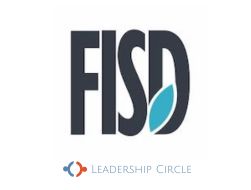
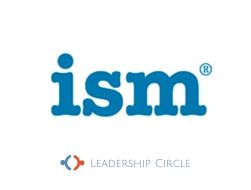
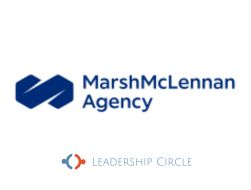








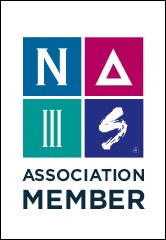 .
. 
